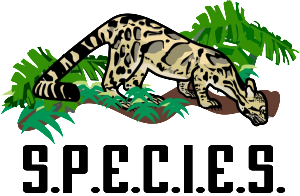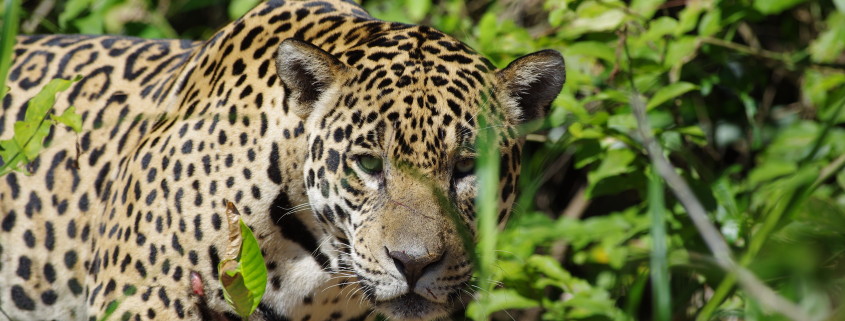The Gran Chaco: Paraguay’s hope for jaguar conservation
The Gran Chaco is perhaps not the first place you think of when you think of jaguars. A harsh and difficult terrain, it was dubbed the “Green Hell” by Paraguayan troops in the 1930s. But the Gran Chaco is an important site of conservation for jaguars in Paraguay.
“The Chaco ecosystem is distributed in three countries (Paraguay, Bolivia and Argentina), but when you talk about the conservation of wild population of jaguars in Paraguay, our biggest hopes remain in the Chaco,” Diego Gustavo Giménez, Chief Program Officer for S.P.E.C.I.E.S.’s Chaco Jaguar Conservation Project, explains.
Jaguars are thought to have once roamed the full one million km2 expanse of the Gran Chaco, but the ecoregion now suffers from some of the highest rates of tropical deforestation in the world, which has shrunk the species’ habitat considerably.
Across the region jaguars are threatened by the loss of their habitat, but also because of intentional killing. As Giménez explains below, there are differing views on jaguars in Paraguay, but one of these is driven by fear of the creatures. People feel threatened by jaguars, and whether that threat is real or not, the result is often the same – the creatures are killed shortly after being seen.
S.P.E.C.I.E.S. has launched the first and only program committed to the long-term conservation of jaguars across the Gran Chaco. In the following interview, Giménez explains some of the underlying issues which the project aims to tackle, and shares his personal view of conservation in Paraguay, his home country.
What drew you to study conservation?
It all began during my training at college with general concepts about conservation biology, and the goals that it pursues. I studied at the National University of Asuncion.
My interest became stronger and more specific once I started working in the Environment Secretariat here in Paraguay, there I had the chance to be involved in different conservation projects and the development of management plans of endangered species; this showed me the reality of the numerous conservation problems that currently occurs in my country.
This pushed me to take decisions about the best way for me to help in the conservation of important areas and to join people who works to reach important environmental goals.
What does the jaguar mean to you, and why do we need to conserve it?
The jaguar means perfection to me. You can see in it a creature with strength and intelligence, a creature that is the greatest predator of America, and at the same time, you can only compare all its greatness with its beauty.
We need to conserve jaguars, because through it we are conserving all other species under them in the food chain. We need to conserve them for the balance of the ecosystems where they live.
What are the different views on the jaguar in Paraguay?
Well, there are many actually. My view is one that many people have; the belief that we are the ones who are in the land of the jaguar, in their home, so we have to respect that and try to live in harmony with them because they are the real owners of all this land.
Others have a view of fear. In some places, people live without wanting to have jaguars near them because they feel so insecure about it.
The view that is left is the worst in my opinion. People who don’t love jaguars, who don’t fear jaguars and who don’t respect them. These people see jaguars only as a trophy to hunt, without any care for their population or their endangered status.
What is your vision of the conservation of jaguars in Paraguay?
I believe we have to push in three main directions, and these three directions are among the main aims of our project.
One of them is to work on-site because when you work with jaguars you are also working a lot with the biodiversity that depends on the species. I believe that by focusing on the jaguar we can help other species and biodiversity that shares its habitat.
But we can’t just work on-site, we also to need to educate. We can’t just do this at the local level or around the areas where we work in the field, we also have to educate people in cities, like the capital of Asuncion. The people who live there might then become interested in the environment and the conservation of biodiversity, but this interest has to be built.
I believe this is a direction which we have to focus on; to make people know of the importance of biodiversity in general, but specifically of jaguars because they are so important to ecosystems.
Another direction is working with students who are in environmental careers, because here in Paraguay it’s difficult to gain experience while studying. There aren’t so many opportunities for gaining experience in the field. So we want to involve these students in our work in jaguar conservation.
I know that with this project we can help the University by giving students the chance to work with us in the field and help them to build their knowledge, to help them understand what they can give to the biodiversity of Paraguay.
You are saying that the jaguar is intricately linked to its habitat, the Chaco. Why do you believe the Chaco needs to be conserved?
The Chaco is a very particular environment, when you say Chaco you’re not talking about just one kind of area.
For instance, you have a particular kind of biodiversity. If you are in the northern Chaco and when you go down to the south, you see the different environments, flora and fauna that the Chaco has. Each has its own unique species.
There is also a lot of information that we still don’t know, because it’s not that easy to study the Chaco. The only way to conserve the Chaco and it’s biodiversity is knowing what is in it, their conservation status, health of their population, etc.
I believe the Chaco is a very good place for conservation because we can’t talk about conserving wild population of jaguars without making some effort to conserve the Chaco, both things go hand in hand.
The Chaco ecosystem is distributed in three countries, Paraguay, Bolivia and Argentina, but when you talk about the conservation of wild populations of jaguars in Paraguay our biggest hope remains in the Chaco. Similarly, there are projects in the Atlantic Forest ecosystem and ex situ conservation research currently developing in our country.
Find out more about S.P.E.C.I.E.S. Chaco Jaguar Conservation Project here.


